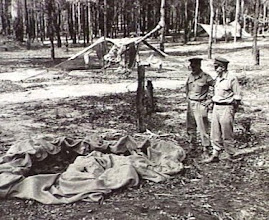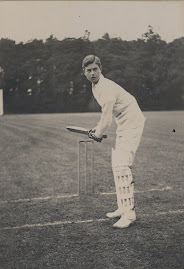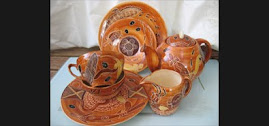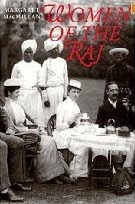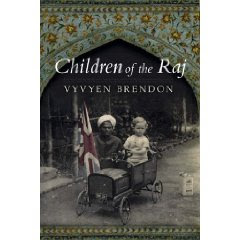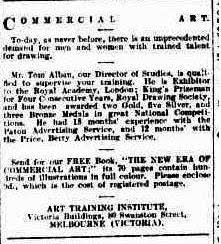In July 2014 Christine Paterson and Jenni Ibrahim, two of the original group who met at Loggerheads in 2011, met up again. Chris travelled from her home in France via a family visit in england and Jenni from hers in Australia. They met up on the quay at St Peter Port Guernsey, Channel Islands. They were seeking the the gravestone of Thomas Clifton Alban who died in Guernsey in 1864 and the house his family lived in, La Vrangue, as recorded in the 1871 census. They did not find the gravestone in Candie Cemetery, St Peter Port, though they lacked burial registry information and many of the gravestones were very worn.
They did discover La Vrangue, the only house in the area of a suitable age.
Sunday, August 17, 2014
Wednesday, December 21, 2011
Albans
Genealogists at Loggerheads
In October 2011 I returned from a trip to the United Kingdom. During five weeks away I met up with a group of wonderful people I’d never met before and who are not related to me by blood or marriage. Some had never met before, despite being second cousins living in the same country. What a time we had! We shared morning tea, then a walk, followed by lunch in a local pub, “We Three Loggerheads”. We talked and talked - till all had to go our separate ways. It felt like we already knew each other. For the past two years we’d been emailing each other as we researched a person of common interest, Clifton Frederick Alban (aka Clifton Frederick Bailey, 1897-1917).
In October 2011 I returned from a trip to the United Kingdom. During five weeks away I met up with a group of wonderful people I’d never met before and who are not related to me by blood or marriage. Some had never met before, despite being second cousins living in the same country. What a time we had! We shared morning tea, then a walk, followed by lunch in a local pub, “We Three Loggerheads”. We talked and talked - till all had to go our separate ways. It felt like we already knew each other. For the past two years we’d been emailing each other as we researched a person of common interest, Clifton Frederick Alban (aka Clifton Frederick Bailey, 1897-1917).
 |
| Genealogists meet at Loggerheads Country Park, North Wales, September 2011 |
In the
course of my Alban research I created this blog and
put details about the family on several family tree sites, Genes Reunited and
Ancestry. In 2009 I received an enquiry asking whether I knew anything about a Clifton
Frederick Alban/Bailey. This Eureka moment began
the friendship between five of us – three in England,
one in France and me in Western Australia. By
the time we met up in Loggerheads, north Wales we were a party of nine,
including four long-suffering partners. We hopped out of our respective vehicles,
greeting each other with excited hugs and screams of joy, finally face to face.
The great
grandparents of three of my new friends had somehow taken Clifton Frederick
Alban under their wing. They’d liked him so much that he’d been added into their
family tree; there were four Morgan generations named Clifton, two are living. One forebear had tattooed
Clifton’s
initials onto his arm, according to his First World War enlistment papers. What
was the relationship between Clifton
Frederick Alban and their Morgan ancestors? We set out to find out.
We used
the usual sources, censuses and certificates. We had some success contacting
the archivists at two schools Clifton
had been enrolled in, starting with the one he’d been residing at in 1911. A militaria
collector contacted us after buying Clifton’s
WW1 medals. He shared information about Clifton’s
military service.
In the various
records Clifton Frederick’s surname was sometimes Alban, his father’s surname,
and at other times, Bailey, the maiden name of his father’s wife, Florence. But was she actually
his mother? The birth certificate said so. But the birth occurred nearly 100
miles from Florence’s
home.
We
couldn’t find Clifton
in 1901 though he would have been only four. Why wasn’t such a young child with
his parents? Not with his father who was living with another woman, Alice. Not with Florence,
who had delivered seven children before, six still alive. Things didn’t add up.
At 19
Clifton F Alban married Doris Gregory, then joined the Royal Flying Corps. The
marriage was short-lived; ten months later Clifton
was shot down over France.
His widow re-married five years later. We
identified three sons from the second marriage. The eldest would be nearly
ninety - if he were still alive. One of our group found a son in the British
white pages.
How would
an elderly person react to enquiries out of the blue about their mother’s first
husband? Many possibilities flew back and forth in emails. The son might be
ill, have dementia or be suspicious of our motives. They might never have known
of their mother’s first marriage. A phone call would be too risky. Between us
we carefully drafted a letter which was printed and posted to Kent from Somerset.
A brief handwritten
reply was followed by a much longer typed one, with photocopied records. This resulted
in a flurry of excited emails between Australia,
England and France in
January 2010. The youngest son, now 77, was more than happy to share
significant documents which had been filed away because he didn’t know what else
to do with them.
Those
records revealed that the Clifton’s father had established
a relationship with his sister-in-law, Alice who was actually Clifton’s mother. Bailey, the surname Clifton
sometimes used, was not only the maiden name of his father’s wife, Florence, but also of her elder sister, shown with Clifton’s father in 1901.
The relationship lasted some years;
three more children were born to Alice and Clifton’s father. Sadly Alice died in 1906 after giving birth to
twins. Of Alice’s
four children, Clifton Frederick Alban died at 20, a sister died aged five and
a brother died at one. The remaining twin migrated to Canada.
We felt
so sorry for Clifton Frederick Alban. Born “out of wedlock” when this was
shameful and sent away to boarding schools. His mother died when he was just
nine; his father didn’t seem interested. No wonder this young boy joined the
high risk excitement of the Royal Flying Corps.
Finally we spotted him in 1901, living with the
Morgans in Kent
as their adopted or fostered son, Clifton F Morgan. Morgan had been mis-transcribed so it took a
while to make the connection. It was good
to know that he had a place in the hearts of the Morgan family despite his sad
childhood and short life.
Why had these living Morgan second cousins never met until our Alban research
brought them together in Wales?
Two generations before there’d been a rift in the family. The separate branches
had gone their own ways. Our research into Clifton Frederick Alban had brought
the two family lines back together. The power of family history.
Thursday, November 4, 2010
Thomas Clifton Alban and Elizabeth Gore Tipper
My research led me to look further into the parents of Clifton F S Alban, William G Alban and Arthur D Alban to see whether there might have been other Alban descendants.
Thomas Clifton Alban and Elizabeth Gore Tipper
The parents of Clifton F S Alban and William G Alban were Thomas Clifton Alban (1826 St Pancras, London - 1864 Guernsey, Channel Islands) and Elizabeth Gore Tipper (1834 Whitebrook, Monmouthshire,Wales - 1900 East Hampstead, Berkshire, England).
Besides these two military sons, Thomas C Alban and Elizabeth G Tipper produced at least three more children that I have been able to locate: Elizabeth Annie Alban (1852-1853) who died in Karachi, East India a year after her birth; George Edward Alban (1856 Baroda, India - 1870 Easthampstead, England) and Arthur David Alban (1862 Guernsey, Channel Islands – 1927 Totnes, Devon).
The two oldest sons Clifton F S and George E Alban were sent back to England to live with their widowed maternal grandmother Elizabeth Tipper in South Stoneham, Hampshire (1861 census). The boys’ parents remained in India where Elizabeth G Tipper gave birth to their third son William G Alban in 1860, Uncle Tom’s father.
Two years later Elizabeth Tipper gave birth to a fourth son, Arthur D Alban in 1862 on Guernsey where her widowed mother-in-law (Anne Benbow) lived. The second son George E Alban died in 1870 at just 13 years of age in Easthampstead, Berkshire. Thirty years later George’s mother Elizabeth G Tipper died in the same district.
Thomas C Alban rose from being an ensign in the Bombay Infantry in 1844 to Deputy Judge Advocate General for the British Army in India by 1860. This position is the legal and judicial chief of the Army; Judge Advocate General officers advise the presiding officers of court-martials on military law, besides providing legal help to the military in all aspects.
After attaining this post Thomas C Alban died on Guernsey at just 38 years old, leaving Elizabeth as a young widow with four boys aged 2, 4, 8 and 10 years of age. Of their five children only Clifton F S, William G and Arthur D Alban reached adulthood. It cannot have been easy for Elizabeth. She had married Thomas C Alban when she was only 17 years old. By the time she was 24 she’d given birth to four children in India and one in Guernsey. Her only daughter died at 5 months of age in India and her second son in England, a little over five years after her husband’s death.
In 1871 Elizabeth G Tipper - with her three surviving boys - is recorded again in St Peter Port, Guernsey living with her mother-in-law Anne Benbow. She appears to have lived the rest of her life in England at the homes of her mother-in-law or her sister Lucy E Tipper.
Lucy E and Elizabeth G Tipper had both been governesses overseas. Presumably this is how they met their husbands to be. Their parents were Samuel Tipper and Elizabeth Gore whose five children were born across the British Isles – from Ireland to Wales to Southampton, England. Samuel Tipper's occupation is not known, but travel must have been part of it.
Perhaps her childhood experiences of travel prepared Elizabeth for living in the remote parts of the British Empire. After the premature death of Thomas C Alban, his widow Elizabeth G Tipper saw her older sons Clifton F S and William G Alban join the Bombay Native Infantry and soon became officers in India.
What happened to Arthur David Alban, their youngest child and third surviving son? He was the exception. He became a diplomat.
Thomas Clifton Alban and Elizabeth Gore Tipper
The parents of Clifton F S Alban and William G Alban were Thomas Clifton Alban (1826 St Pancras, London - 1864 Guernsey, Channel Islands) and Elizabeth Gore Tipper (1834 Whitebrook, Monmouthshire,Wales - 1900 East Hampstead, Berkshire, England).
Besides these two military sons, Thomas C Alban and Elizabeth G Tipper produced at least three more children that I have been able to locate: Elizabeth Annie Alban (1852-1853) who died in Karachi, East India a year after her birth; George Edward Alban (1856 Baroda, India - 1870 Easthampstead, England) and Arthur David Alban (1862 Guernsey, Channel Islands – 1927 Totnes, Devon).
The two oldest sons Clifton F S and George E Alban were sent back to England to live with their widowed maternal grandmother Elizabeth Tipper in South Stoneham, Hampshire (1861 census). The boys’ parents remained in India where Elizabeth G Tipper gave birth to their third son William G Alban in 1860, Uncle Tom’s father.
Two years later Elizabeth Tipper gave birth to a fourth son, Arthur D Alban in 1862 on Guernsey where her widowed mother-in-law (Anne Benbow) lived. The second son George E Alban died in 1870 at just 13 years of age in Easthampstead, Berkshire. Thirty years later George’s mother Elizabeth G Tipper died in the same district.
Thomas C Alban rose from being an ensign in the Bombay Infantry in 1844 to Deputy Judge Advocate General for the British Army in India by 1860. This position is the legal and judicial chief of the Army; Judge Advocate General officers advise the presiding officers of court-martials on military law, besides providing legal help to the military in all aspects.
After attaining this post Thomas C Alban died on Guernsey at just 38 years old, leaving Elizabeth as a young widow with four boys aged 2, 4, 8 and 10 years of age. Of their five children only Clifton F S, William G and Arthur D Alban reached adulthood. It cannot have been easy for Elizabeth. She had married Thomas C Alban when she was only 17 years old. By the time she was 24 she’d given birth to four children in India and one in Guernsey. Her only daughter died at 5 months of age in India and her second son in England, a little over five years after her husband’s death.
In 1871 Elizabeth G Tipper - with her three surviving boys - is recorded again in St Peter Port, Guernsey living with her mother-in-law Anne Benbow. She appears to have lived the rest of her life in England at the homes of her mother-in-law or her sister Lucy E Tipper.
Lucy E and Elizabeth G Tipper had both been governesses overseas. Presumably this is how they met their husbands to be. Their parents were Samuel Tipper and Elizabeth Gore whose five children were born across the British Isles – from Ireland to Wales to Southampton, England. Samuel Tipper's occupation is not known, but travel must have been part of it.
Perhaps her childhood experiences of travel prepared Elizabeth for living in the remote parts of the British Empire. After the premature death of Thomas C Alban, his widow Elizabeth G Tipper saw her older sons Clifton F S and William G Alban join the Bombay Native Infantry and soon became officers in India.
What happened to Arthur David Alban, their youngest child and third surviving son? He was the exception. He became a diplomat.
Benbow family
What of the background of Anne Benbow, wife of barrister and solicitor William Y Alban, whose husband died when their youngest child was only eight? She outlived him by 35 years. She lived with her children in various places: in Ealing, Middlesex; Bath, Somerset and on Guernsey in the English Channel.
John Benbow (1770-1855) and Elizabeth Bradly (?-1825)
Like Anne Benbow’s husband and father-in-law, her father, John Benbow (abt 1770-1855) was a barrister and solicitor who appeared for clients at the Old Bailey. He was evidently related to ("kin") to Admiral John Benbow (1653-1702) according to Peter Burke's book Celebrated Trials Connected with the Army and Navy, W H Allen, 1866.
William Y Alban seems to have joined his father-in-law’s legal practice, which became Alban and Benbow. By 1824 Anne Benbow’s younger brother John Henry Benbow (1800-1880) had also joined the firm which now became Benbow, Alban and Benbow of London.
John Benbow (senior) became a liberal conservative Member of Parliament for the seat of Dudley in 1844. In 1868 John H Benbow testified in the Old Bailey in the trial of Frederick Augustus Farrar and John Hullett who were indicted for fraud against his father Hon John Benbow, Member for Dudley:
Anne Benbow’s mother Elizabeth Bradly had died prematurely in 1825 after giving birth to at least seven children in the nine years between 1797 and 1806.
One of them, Clifton Benbow (1799-1881) served as a Major in the Bombay Army. He retired to England and, at nearly 60 years of age, married a woman half his age. It seems likely that the many Alban descendants given a forename of Clifton were named after him.
Anne Benbow was the eldest of John Benbow and Elizabeth Bradly’s children. Like her mother Anne also gave birth to at least seven children before her husband William Y Alban died in 1841, leaving her of independent means, but with seven children to rear alone.
John Benbow (1770-1855) and Elizabeth Bradly (?-1825)
Like Anne Benbow’s husband and father-in-law, her father, John Benbow (abt 1770-1855) was a barrister and solicitor who appeared for clients at the Old Bailey. He was evidently related to ("kin") to Admiral John Benbow (1653-1702) according to Peter Burke's book Celebrated Trials Connected with the Army and Navy, W H Allen, 1866.
William Y Alban seems to have joined his father-in-law’s legal practice, which became Alban and Benbow. By 1824 Anne Benbow’s younger brother John Henry Benbow (1800-1880) had also joined the firm which now became Benbow, Alban and Benbow of London.
John Benbow (senior) became a liberal conservative Member of Parliament for the seat of Dudley in 1844. In 1868 John H Benbow testified in the Old Bailey in the trial of Frederick Augustus Farrar and John Hullett who were indicted for fraud against his father Hon John Benbow, Member for Dudley:
I am a solicitor, of Stone Buildings, Lincoln's Inn - I am solicitor to Lord Dudley - I have been so for the last twenty-five years - I have seen these documents, the agreement, and the bill-the signature of "Dudley" to them is not the earl's signature.
Anne Benbow’s mother Elizabeth Bradly had died prematurely in 1825 after giving birth to at least seven children in the nine years between 1797 and 1806.
One of them, Clifton Benbow (1799-1881) served as a Major in the Bombay Army. He retired to England and, at nearly 60 years of age, married a woman half his age. It seems likely that the many Alban descendants given a forename of Clifton were named after him.
Anne Benbow was the eldest of John Benbow and Elizabeth Bradly’s children. Like her mother Anne also gave birth to at least seven children before her husband William Y Alban died in 1841, leaving her of independent means, but with seven children to rear alone.
William John Alban (1821-1862)
At 28 the Reverend William J Alban married a Scots woman, Agnes Crooks. Three daughters and two sons were born:
- Agnes Erskine Alban in 1850, died shortly afterwards;
- Ann Eliza Margaret Alban in 1851, died 1852;
- Mary Harriet Alban in 1855; and
- William Alban, one of twin boys in 1857, the other unnamed. There seems to be no further trace of either of them.
Their only surviving child Mary H Alban seems to have been sent to live with a maternal aunt in Edinburgh , Scotland
William Yeates Alban (1790-1841) and Anne Benbow (c1797-1876)
Uncle Tom’s grandparents, Thomas Clifton Alban and Elizabeth Gore Tipper created a family of distinguished career soldiers and diplomats, people whose work or inclination took them overseas during the British era of empire-building.
What were their origins? Thomas C Alban was born to a well-educated family. His father, William Yeats Alban, (also spelled at William Yeates and William Yates Alban) was a solicitor with his own practice at Lincoln’s Inn, London. William Y Alban’s estate was at Brixham, Sunningvale Ave, Biggin Hill, Westerham, Surrey, now part of Greater London.
William Y Alban married Anne Benbow in 1819 in St Pancras, Middlesex. They had seven children - three boys and four girls- all born in London. Thomas C Alban was their second son and the fifth-born child. He attended Rugby School.
Two of his brothers matriculated through Oxford, Frederick Alban (1833-1912), the youngest child and William John Alban (1821-1862), the eldest. William J Alban graduated with first class honours and a masters degree in 1846, and became a man of the cloth, the Vicar of Mevagissey, Cornwall.
Frederick Alban joined the British Army serving in the 44th Foot, and in the 8th native Infantry, departing for India in 1849.
Anne Benbow is not recorded in England, Scotland or the Channel Isles in 1861. Perhaps she was overseas visiting her son Thomas C Alban, his wife Elizabeth and their newborn son William G Alban. However she may have already made a home in Guernsey by then, as her grandson Arthur David Alban was born there in 1862 (to Thomas C Alban and Elizabeth G Tipper).
But by 1871 Anne Benbow was living at La Vrangue, St Peter Port, Guernsey, sharing her home with her now widowed daughter-in-law Elizabeth G Tipper and her three sons, as well as her own unmarried adult children - Eliza Dorothy Alban (1826-1903), aged 50, and Frederick Alban, (1833-1912) aged 38, now a retired army officer. Neither Eliza nor Frederick Alban married and so left no recorded Alban descendants.
 |
| La Vrangue, St Peter Port, Guernsey, Channel Islands, visited July 2014 (Image: J Ibrahim) |
The lives of women are always more difficult to trace as they are not as well documented as those Alban men whose careers took them to exotic parts of the world. Sometimes identifying the marriage of a young woman whose father has pre-deceased her is difficult as the family may have had to move to a relative's place. However it looks as though the four daughters of William Y Alban and Anne Benbow left no descendants.
One died in childhood and two died in their thirties, unmarried. Anne Elizabeth Alban (c1823-1856) and Harriet Mary Alban (c1825-1855), never married and died within a year of each other in Honfleur, France. Perhaps after their father died it was not possible for the daughters to “marry well”.
Thomas C Alban and his younger brother Frederick joined the British Army - perhaps the best choice for young men from respectable families whose father was no longer available to support them and guide their careers. Frederick did not marry and had no children, while Thomas C Alban had five children although only three of them survived to adulthood. Of the seven children only Thomas C Alban and his eldest brother William J Alban married and had children.
William Y Alban was the son of Thomas Alban (1757-1835) a clergyman and his wife Dorothy Yeates of Broadward, Leominster, Herefordshire. The Rev Thomas Alban served in Ludlow, Culmington and Snead on the Wales-England border. Nine children were born to them although at least four of them died in infancy. The eldest Richard Stead Alban (1786-1836) was a gentleman while the sixth, another Thomas Alban (1795-1849) attended Oxford University and took over his father's parish as rector of Snead.
These two Reverends Thomas Alban were some of the Welsh-born clergy of the established church descended from Alban Thomas (1685-1742) of Llansantffraid, Cardiganshire and Catherine Evans Lewis. The family is the subject of a study by researcher Sheila Rowlands (Second Stages in Researching Welsh Ancestry, 1999, chapter 3. See cover at right).
William Y Alban was the son of Thomas Alban (1757-1835) a clergyman and his wife Dorothy Yeates of Broadward, Leominster, Herefordshire. The Rev Thomas Alban served in Ludlow, Culmington and Snead on the Wales-England border. Nine children were born to them although at least four of them died in infancy. The eldest Richard Stead Alban (1786-1836) was a gentleman while the sixth, another Thomas Alban (1795-1849) attended Oxford University and took over his father's parish as rector of Snead.
These two Reverends Thomas Alban were some of the Welsh-born clergy of the established church descended from Alban Thomas (1685-1742) of Llansantffraid, Cardiganshire and Catherine Evans Lewis. The family is the subject of a study by researcher Sheila Rowlands (Second Stages in Researching Welsh Ancestry, 1999, chapter 3. See cover at right).
Children of Thomas C Alban and Elizabeth G Tipper
Arthur David Alban (1862-1927) The youngest child of Thomas C Alban and Elizabeth G Tipper Arthur D Alban was born in Guernsey in 1862 and was still (or again there in 1871). He remained in England with his widowed mother attending Tonbridge School, Kent. In 1881 Arthur was a 19 year old student, living with his mother, a foreign governess, at Cavendish Square, Marylebone, London at the home of Elizabeth’s sister Lucy Ellen Tipper, also widowed.
Arthur D Alban joined the British Diplomatic Service as a student interpreter in 1882 and shortly afterwards was shown in the Tonbridge School register as Assistant to the British Consulate at Beirut and Damascus. He did not appear in the 1891 or 1901 British censuses. In 1911 he is mentioned in British Foreign Office papers as the official government recipient of a treatise on Egyptian customs by G E DeVries entitled Stolen Husbands, Foreign Wives: Mixed Marriage and Identity Formation. Between 1909 and 1919 Arthur travelled between Britain and Port Said, Egypt.
By 1919 he was shown on the passenger list of the ship the Kildonan Castle to Port Said, Egypt as His Britannic Majesty’s Consul in Cairo, Egypt. In 1919 his wife Ann Amalia Fritsch (1866 Hungary - 1966) travelled with him to Egypt. She was the daughter of Iskender Bey Fritsch, a colonel in the Ottoman Army, according to the marriage announcement in The Times of India. They married in 1889 in Beirut, then in Syria. See sidebar with more about Arthur David Alban.
Arthur D Alban and Ann Amalia Fritsch had three children all born in Alexandria, Egypt while their father was serving as consul. Evan Charles Harry Alban (1890 Alexandria, Egypt-1974 England), Arthur Hugh Alban Alban (1892 Alexandria, Egypt—1978 England) and Reginald George Evelyn William Alban (1899 Alexandria, Egypt—1983 England). I have recently made contact with a great grand daughter of Arthur D Alban and Ann Amalia Fritsch. She has four young children of her own and two living Alban cousins with children of their own too – so there are living Albans after all!
Here are some of the key features of the distinguished careers of the children of Arthur D Alban and Ann A Fritsch.
Evan Charles Harry Alban (1890-1974)
According to his great niece, Evan C H Alban was the one who was a spy though he kept it secret, even from his wife, or rather wives, for he married twice. Firstly he married Sarah Talbot Kavanaugh in 1926 (who had previously been married to Walter Valentine Churchill-Longman) and then after divorcing Sarah in 1932 he married Constance Charlotte Wilmot-Sitwell (known as Bunny) in 1945. She was the daughter of Hervey Wheler Wilmot-Sitwell (1865-1944) of the famous Sitwell family and Alice Mary Schwind.
In 1913 Evan C H Alban travelled by ship to Liverpool from Port Said where he had been working in the Egyptian police force. During WW1 he served the Royal Artillery in Iraq and France, in the 11th Brigade, Royal Field Artillery and attained the rank of Acting Captain. In 1923 he went to India to live, still holding the rank of officer. Understandably reports of his activities in military intelligence may not be easily available.
Arthur Hugh Alban Alban (1892-1978)
Arthur H Alban is frequently cited in Sudanese historical accounts of the colonial and post-colonial period. He served the Sudanese Government for a long period. During the 1914-18 war he reached the rank of Acting Lieutenant in the Royal Field Artillery.
A report of his retirement was published in the Sudan Star newspaper on 29 August 1951 and posted by his son David on the BBC website:
“Capt. A.H.A. Alban First Commander to Occupy Axis Territory.
“Captain A. H. A. Alban, D.F.C will be sailing from Port Sudan about the end of the month on final leave after thirty years of service with the Sudan Government.
“Captain A.H.A. Alban was posted from the Royal Field Artillery to the Egyptian Army in August, 1921 and, with the rank of Bimbashi, was later seconded for duty with the Sudan Government and appointed as 2nd Inspector (equivalent to the rank of Assistant District Commissioner) in the old Mongalla Province, in southern Sudan.”
Quoting from the same newspaper report posted in the BBC Empire website:
Reginald George Evelyn William Alban (1899-1983)
Reginald G E W Alban was born in Alexandria, Egypt. Joining the Alban “family business” - the British Army - he received his first commission in 1918 as a Captain in the Indian Foreign and Political Department (India Office List 1933).
His formal military employment ended in 1925 when he became acting British Political Agent, Oman on 24 May 1925 until 7 Oct 1925 for the first of a number of periods. He held a number of diplomatic posts in Oman, Bahrain and the Persian Gulf between 1925 and 1947. His journeys by ship from England to Calcutta, India and the Middle East - Port Said and Aden show that he travelled regularly in the course of his work.
Just prior to Indian’s independence Reginald G E W Alban is included as an author of the Kerman Consulate Diary Persia (1945-47), by the Foreign Department of the Government of India, by which time he was a Lieutenant Colonel. His wife was Kathleen Margaret Shearer who had previously been married to Oliver Durrant.
Arthur D Alban joined the British Diplomatic Service as a student interpreter in 1882 and shortly afterwards was shown in the Tonbridge School register as Assistant to the British Consulate at Beirut and Damascus. He did not appear in the 1891 or 1901 British censuses. In 1911 he is mentioned in British Foreign Office papers as the official government recipient of a treatise on Egyptian customs by G E DeVries entitled Stolen Husbands, Foreign Wives: Mixed Marriage and Identity Formation. Between 1909 and 1919 Arthur travelled between Britain and Port Said, Egypt.
By 1919 he was shown on the passenger list of the ship the Kildonan Castle to Port Said, Egypt as His Britannic Majesty’s Consul in Cairo, Egypt. In 1919 his wife Ann Amalia Fritsch (1866 Hungary - 1966) travelled with him to Egypt. She was the daughter of Iskender Bey Fritsch, a colonel in the Ottoman Army, according to the marriage announcement in The Times of India. They married in 1889 in Beirut, then in Syria. See sidebar with more about Arthur David Alban.
Arthur D Alban and Ann Amalia Fritsch had three children all born in Alexandria, Egypt while their father was serving as consul. Evan Charles Harry Alban (1890 Alexandria, Egypt-1974 England), Arthur Hugh Alban Alban (1892 Alexandria, Egypt—1978 England) and Reginald George Evelyn William Alban (1899 Alexandria, Egypt—1983 England). I have recently made contact with a great grand daughter of Arthur D Alban and Ann Amalia Fritsch. She has four young children of her own and two living Alban cousins with children of their own too – so there are living Albans after all!
Here are some of the key features of the distinguished careers of the children of Arthur D Alban and Ann A Fritsch.
Evan Charles Harry Alban (1890-1974)
According to his great niece, Evan C H Alban was the one who was a spy though he kept it secret, even from his wife, or rather wives, for he married twice. Firstly he married Sarah Talbot Kavanaugh in 1926 (who had previously been married to Walter Valentine Churchill-Longman) and then after divorcing Sarah in 1932 he married Constance Charlotte Wilmot-Sitwell (known as Bunny) in 1945. She was the daughter of Hervey Wheler Wilmot-Sitwell (1865-1944) of the famous Sitwell family and Alice Mary Schwind.
In 1913 Evan C H Alban travelled by ship to Liverpool from Port Said where he had been working in the Egyptian police force. During WW1 he served the Royal Artillery in Iraq and France, in the 11th Brigade, Royal Field Artillery and attained the rank of Acting Captain. In 1923 he went to India to live, still holding the rank of officer. Understandably reports of his activities in military intelligence may not be easily available.
Arthur Hugh Alban Alban (1892-1978)
Arthur H Alban is frequently cited in Sudanese historical accounts of the colonial and post-colonial period. He served the Sudanese Government for a long period. During the 1914-18 war he reached the rank of Acting Lieutenant in the Royal Field Artillery.
A report of his retirement was published in the Sudan Star newspaper on 29 August 1951 and posted by his son David on the BBC website:
“Capt. A.H.A. Alban First Commander to Occupy Axis Territory.
“Captain A. H. A. Alban, D.F.C will be sailing from Port Sudan about the end of the month on final leave after thirty years of service with the Sudan Government.
“Captain A.H.A. Alban was posted from the Royal Field Artillery to the Egyptian Army in August, 1921 and, with the rank of Bimbashi, was later seconded for duty with the Sudan Government and appointed as 2nd Inspector (equivalent to the rank of Assistant District Commissioner) in the old Mongalla Province, in southern Sudan.”
Quoting from the same newspaper report posted in the BBC Empire website:
He was there for nearly seven years before being moved to the Upper Nile Province where he served until 1942. During that period he took a prominent part in the re-organisation of the Nuer which followed their revolt of 1927. His imperturbability and firmness - always tempered with good humour - did much to help change their attitude towards the Government from hostility to friendliness. He laid the foundation for Native Administration and Development on tribal lines, and was a keen supporter of education, sending a steady stream of boys to the Nasir Mission School.
The capture of an Italian post at Tirgol on the Abyssinian frontier in June, 1940 by Upper Nile Police under the command of Captain Alban was the first occasion since the outbreak of war that troops under British command had occupied Axis territory.
In November, 1942 Captain Alban was appointed His Britannic Majesty's Consul at Gore in Western Abyssinia, the post from which he retired after a long and distinguished career of loyal service. He died on Jersey in the Channel Islands in 1978.
Reginald George Evelyn William Alban (1899-1983)
Reginald G E W Alban was born in Alexandria, Egypt. Joining the Alban “family business” - the British Army - he received his first commission in 1918 as a Captain in the Indian Foreign and Political Department (India Office List 1933).
His formal military employment ended in 1925 when he became acting British Political Agent, Oman on 24 May 1925 until 7 Oct 1925 for the first of a number of periods. He held a number of diplomatic posts in Oman, Bahrain and the Persian Gulf between 1925 and 1947. His journeys by ship from England to Calcutta, India and the Middle East - Port Said and Aden show that he travelled regularly in the course of his work.
Just prior to Indian’s independence Reginald G E W Alban is included as an author of the Kerman Consulate Diary Persia (1945-47), by the Foreign Department of the Government of India, by which time he was a Lieutenant Colonel. His wife was Kathleen Margaret Shearer who had previously been married to Oliver Durrant.
Subscribe to:
Posts (Atom)





